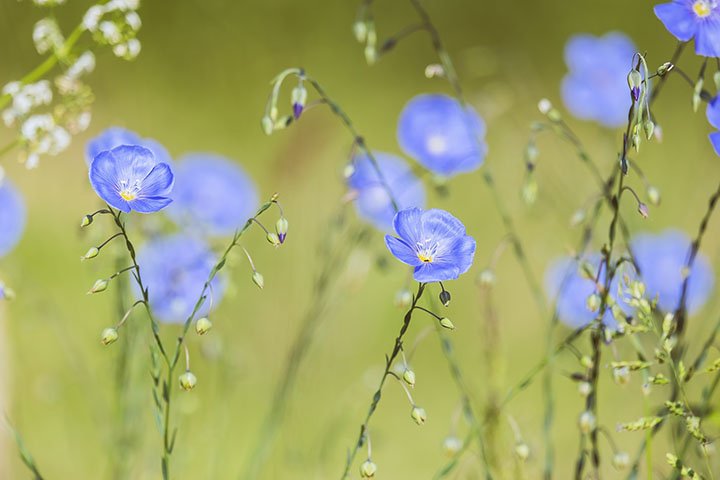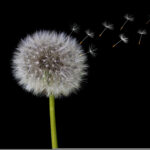There are over 600 Ayurvedic herbs! While we are familiar with many of them, we may not exactly regard them as having medicinal qualities. It may surprise you to know that kitchen spices, weeds, and plants growing right in your front yard also double as ayurvedic herbs. Let’s take a closer look at a few and find out how they can help promote good health and create immunity.
Devadaru means ‘grows in the place of Gods’ and refers to conifers like pine (Pinus longifolis) and cedar (Cedrus deodara) which are found in the Himalaya mountains. Pine is a powerful detoxifier and makes an ideal aromatherapy to clear negative energies in a space. Its heating properties protect us from wind and cold. Adding a few drops of pine or cedar essential oil to a hot bath makes for a soothing, aromatic soak, relieving aches and pains. The bark is used medicinally to treat asthma and neurologic, urinary, and skin disorders. Enjoy a cup of pine tea this fall by adding boiling water to a large sprig of pine needles, steeping for 5-10 minutes, and drinking the hot liquid. It will remove toxins and gas from the body. The next time you are surrounded by pine trees, breathe deeply and take in the blessings from this sacred plant.
Goats head (Tribulus terrestris) is considered a weed that grows all over the U.S. The prickly burs of this plant commonly get stuck in the paws of dogs – ouch! Its Sanskrit name is ‘Gokshur’ meaning ‘cow’, because its spiny fruit would pierce the feet of cows in India. Goats head is an Ayurvedic medicine with diuretic, blood-sugar lowering, cardioprotective, and even aphrodisiac properties. It is often used to treat kidney stones, which bear an uncanny resemblance to the gokshur fruit itself. It also relieves many urinary disorders and improves urine flow. An old remedy was to mix 1 teaspoon of gokshur powder with the juice of one lemon. After sitting overnight, the mixture was filtered and consumed the next morning, afternoon, and evening to treat kidney stones. The next time your pant legs are full of burs, look for the wonderful Goats head ‘weed’ it came from!
Another lovely herb is flaxseed (Linum usitatissimum), referred to as ‘Devi’ in Sanskrit, for female goddess. In olden days, flax linen clothing was worn to protect from bad energies. In the 8th century, King Charlemagne even passed laws requiring people to eat flaxseed in France because he believed so strongly in its healing properties! It is oily (rich in omega 3 fatty acids) with a sweet taste and heating quality. It is used for relieving constipation, as a skin emollient, expectorant for coughs, lowering cholesterol, drawing out toxins from the body, and even preventing some type of cancer. Add a flax ‘egg’ or two to your next baking dish by combining 1 tablespoon of ground flax meal with 3 tablespoons of ice water and letting it sit for 15 minutes. Or pick up a bag of flaxseed at the grocery store and just munch on a teaspoonful every morning. It’s worth getting the seeds stuck in your teeth!
Finally, nutmeg (Myristica fragrans) is a delightful but powerful herb with a wonderful fragrance. The common spice is an aphrodisiac, digestive tonic, and calms the mind. It has a heating property that relieves abdominal pain and distension, diarrhea and gas. Too much nutmeg is not good, however, because it can cause dullness of the mind. A warm snack for autumn is to eat apples or pears stewed with cinnamon, cardamom, cloves, ginger, and nutmeg. Taking a pinch or two of nutmeg in hot milk at night pacifies nerves and helps get a good night’s rest.
There are many amazing, healing herbal remedies all around us. The energies of plants aide and support the very existence of human and animal life and the lifecycle that sustains Mother Earth. Let us take care of our world and make the best use of its beautiful resources.
Uma Hingorani
References:
- https://www.easyayurveda.com/2014/12/18/devadaru-cedrus-deodara-uses-research-side-effects/
- https://www.easyayurveda.com/2012/10/19/tribulus-benefits-dosage-side-effects-medicines-ayurvedic-details/
- https://www.webmd.com/diet/features/benefits-of-flaxseed#1
- https://jessicainthekitchen.com/how-to-make-a-flax-egg/
- https://www.easyayurveda.com/2014/11/26/jaiphal-nutmeg-myristica-fragrans-uses-dose-side-effects/




